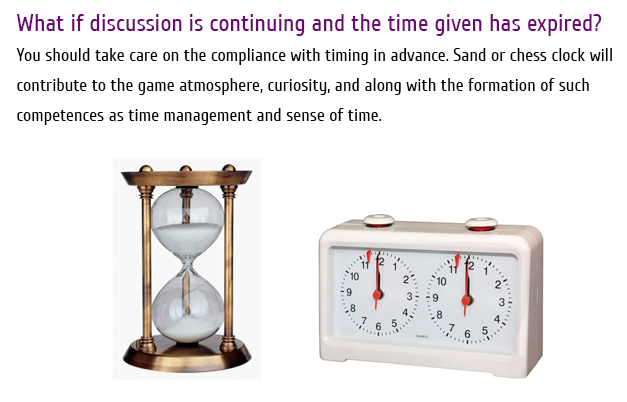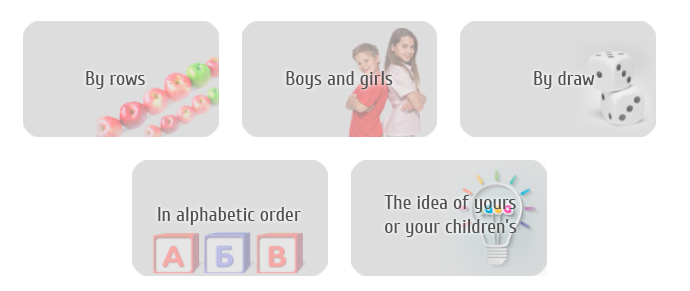1. Select the desired case-lesson.
2. Think what kind of a case-lesson will be of children’s interest. For this you can use the table filter:
- based on sets,
- topic age,
- language,
- number of presentations (if there are time limits),
- competencies:
3. Conducting a case-lesson based on the “scheme”, as it is set out on the platform. Choose the case-lesson and the order of its taking: if necessary, the order can be arbitrary, depending on your needs and capabilities of children.
For example, case-lesson “Smartphone means everything to me!”:

4. It is desirable to choose tasks and questions from the suggested in the case-lesson which can be held in class and the ones given as homework assignments or mini-projects.
For example:

5. Define the timing for each presentation. Insert the estimated time you can allocate for each presentation. Even if you need more time, it will still help you to manage the time in the class.

6. Think of what exactly to focus on, highlighting the main and secondary parts. Prepare “provocative” questions. Put yourself in the place of the pupils: what arguments and counter-arguments would you have then? How would you solve those tasks, which you offer to solve them?
Video 3 (final discussion – answers to the provocative questions of pupils).
7. Don't forget to involve each pupil (to any degree, in all the circumstances)!
8. If you plan to work in teams, think of the options of dividing pupils into teams and number of participants in each team!

9. Configure the Internet, prepare a projector, computers, cables, cords, extension cords or other equipment.
If there is no possibility to use equipment, then take care of graphic and illustrative material, its shape and a sufficient number (number, kind and size you want to print, a place in the class to put them).
In case of such opportunity, dramatize case study classes or separate presentations, distributing roles between the pupils.
10. Don't forget about the proportion of active participation of pupils and teachers in the case-lessons:
- ± 20 % is given to a teacher;
- ± 80 % is given to pupils.
11. Work through the results of the case-coursefor the class to have a full and logical conclusion.
- What did we understand?
- What did we learn?
- Where will we apply it?
- Applauses to each other! (as in a plane upon landing).
Enjoy the case!
